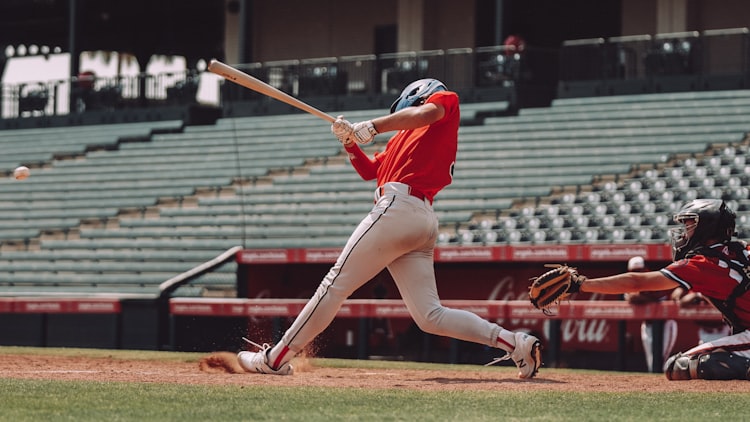Swinging Bats and Epic Showdowns: Cricket vs Baseball
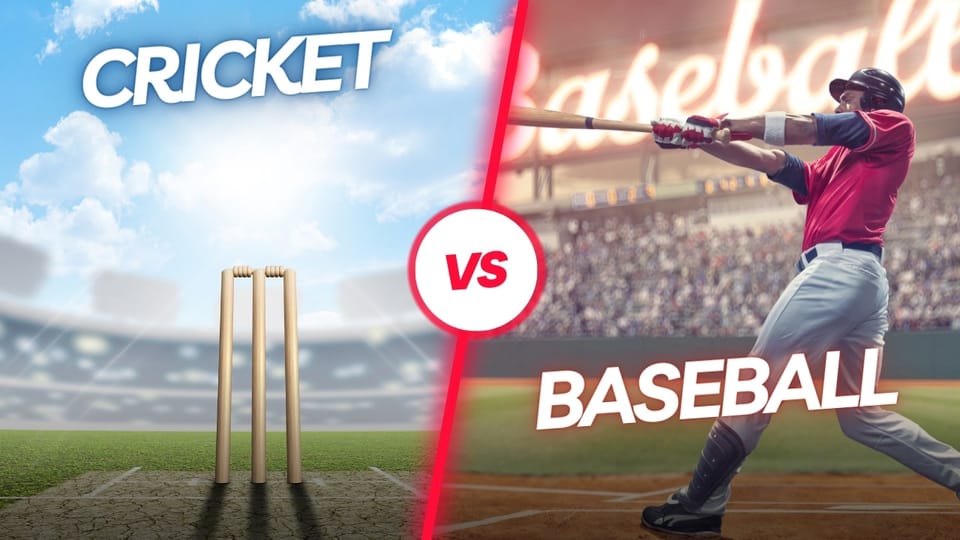
It's a showdown transcending borders, cultures, and time zones, igniting debates hotter than a summer's day on the pitch. But fret not, curious minds and sports fans alike, for we're about to embark on a journey that dissects and deciphers these beloved games, unearthing the quirks, the thrills, and the sheer magic that sets cricket and baseball apart.
Buckle up for an exhilarating ride through rules, rivalries, and, yes, a dash of unexpected trivia. So why should you keep reading? Because we're diving headfirst into a delightful duel of cricket vs baseball, and trust us – you won't want to miss a single inning, over, or out. Game on!
History of Cricket
Cricket's origins can be traced back to 16th-century England, where it evolved from various bat-and-ball games played in rural communities. The earliest recorded match occurred in 1646, and cricket quickly gained popularity among the English aristocracy.
The 18th century saw the establishment of formal rules and the formation of cricket clubs. By the 19th century, cricket had spread to other parts of the British Empire, including Australia, India, and the West Indies.
It became a symbol of colonial influence and cultural exchange. Today, cricket is a global sport, with multiple formats, including Test matches, One Day Internationals (ODIs), and Twenty20 (T20) cricket.
Origin of Baseball
Baseball's origins can be traced to early bat-and-ball games played in England and other European countries. However, the modern version of baseball began to take shape in the United States in the 19th century.
The game's rules were formalized in the mid-19th century, and it quickly gained popularity, especially in urban areas. The first recorded baseball game took place in 1846. Baseball's growth was intertwined with American culture and values, and it eventually became known as America's "national pastime."
The sport spread across the country and led to the establishment of professional leagues, including Major League Baseball (MLB). Over time, baseball's influence extended beyond the United States, with international competitions and leagues in other countries.
Cricket Rules
- Pitch and Wickets: Cricket is played on a circular field with a rectangular 22-yard pitch. Each team has two wickets, three vertical stumps, and two bails.
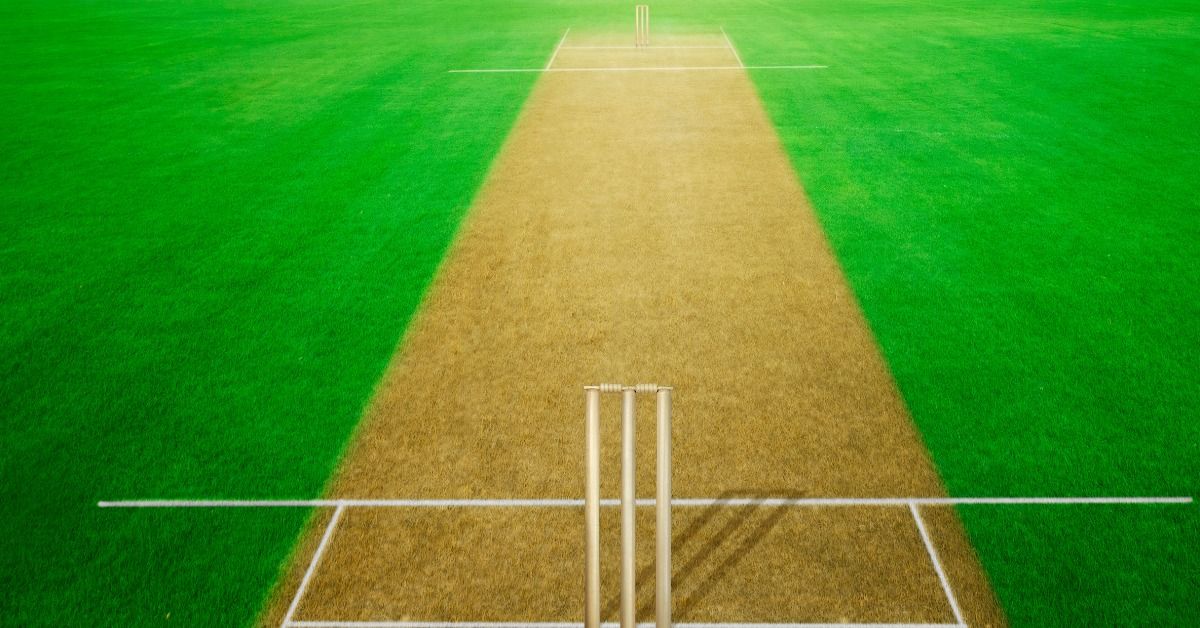
- Batting and Scoring: Batsmen aim to score runs by hitting the ball and running between wickets. They can be dismissed through various methods, such as being bowled out, caught, or run out.
- Bowling and Fielding: Bowlers deliver the ball to the batsmen, attempting to dismiss them. Fielders try to prevent runs by stopping the ball and attempting to get batsmen out.
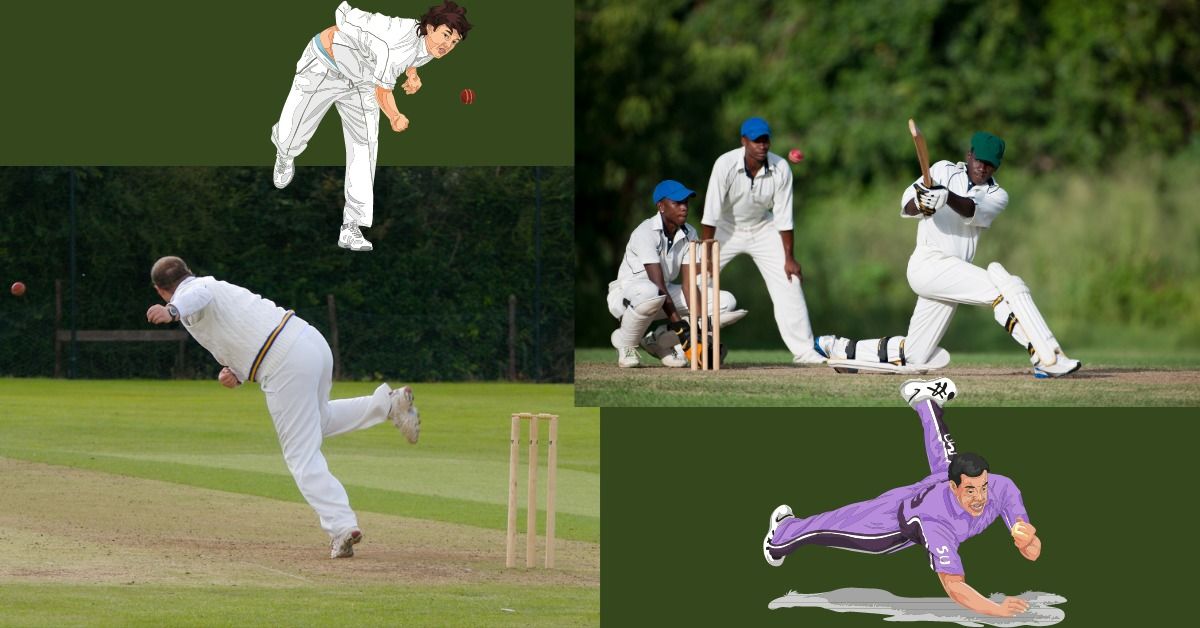
- Overs: An over consists of six legal deliveries. After each over, the bowling end switches, and another bowler delivers from the opposite end.
- Formats: Cricket has the following common formats:
- Test matches (multi-day matches)
- One-Day Internationals (50 overs per team)
- Twenty20 (20 overs per team)
Baseball Rules
- Diamond and Bases: Baseball is played on a diamond-shaped field with four bases – first, second, third, and home plate – arranged in a square.
- Batting and Scoring: Batters aim to hit the pitched ball and advance around the bases to score runs. A home run is achieved when the batter hits the ball out of the playing area.
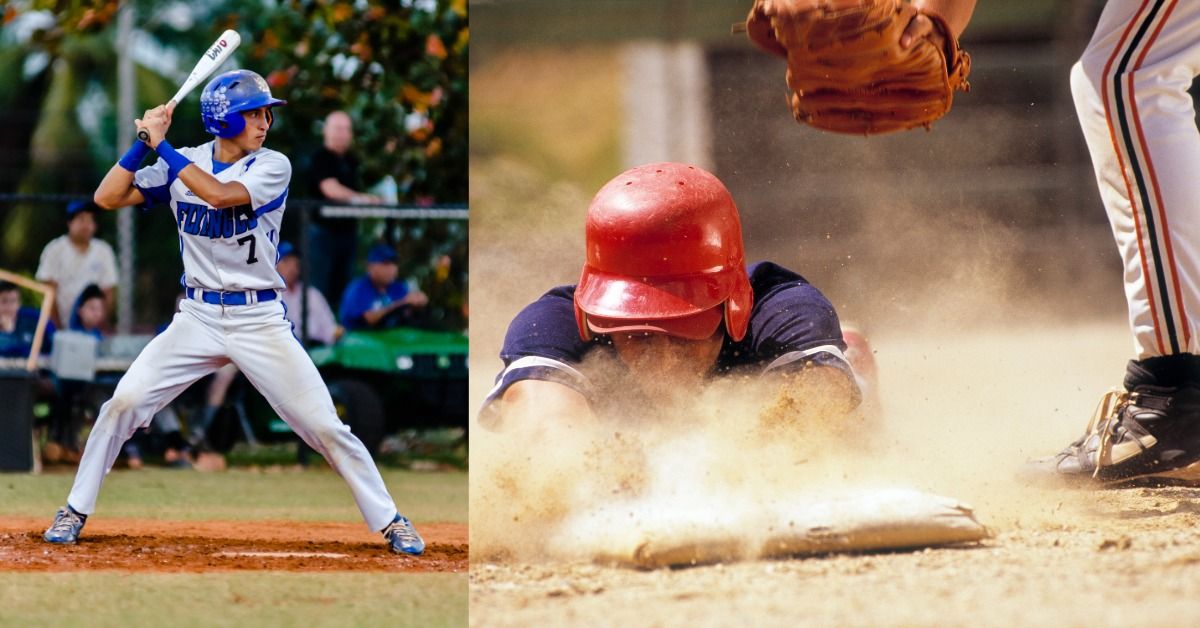
- Pitching and Fielding: Pitchers throw the ball to batters, aiming to strike them out or induce them to hit the ball to fielders. Fielders attempt to catch the ball and make outs.
- Innings and Outs: Baseball is played in innings, with each team taking turns to bat and field. Teams aim to score as many runs as possible while trying to get the opposing batters out.
- Pitch Counts: Pitchers have pitch counts, and they are replaced after reaching a certain limit to prevent overexertion and injury.
- Major Leagues: Baseball is played professionally in (MLB) in the United States, featuring teams from the National League and the American League.
Cricket Terminology
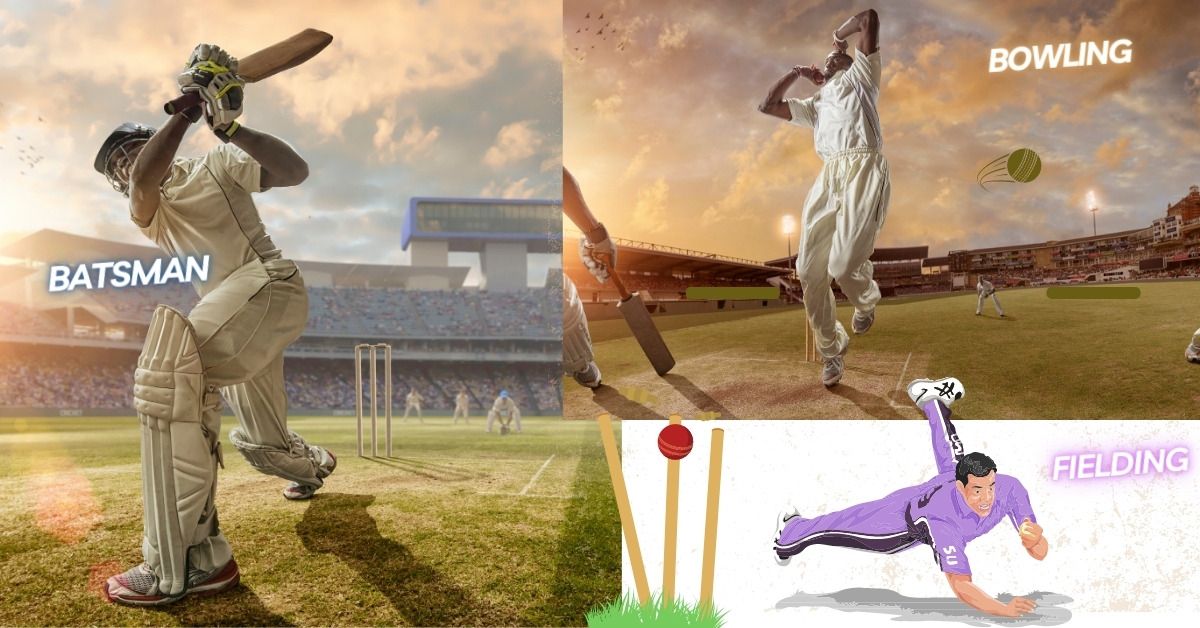
- Batsman: The player on the batting team facing the bowler.
- Bowling: The action of a player delivering the ball to the batsman.
- Wicket: Consists of three vertical stumps and two bails, which the batsman aims to protect.
- Runs: Points scored by the batsmen by running between wickets after hitting the ball.
- Boundary: The edge of the field; hitting the ball past the boundary without it touching the ground scores four or six runs.
- Over: A set of six legal deliveries bowled by one bowler.
- Maiden Over: An over in which no runs are scored by the batsman.
- Innings: The batting turn of a team, consisting of one or more overs.
- No Ball: An illegal delivery that results in a penalty run and extra delivery.
- Wide: A legal delivery that is too far from the batsman to hit, resulting in a penalty run.
- Fielding: The team's effort to prevent runs by stopping the ball and attempting to get batsmen out.
Baseball Terminology
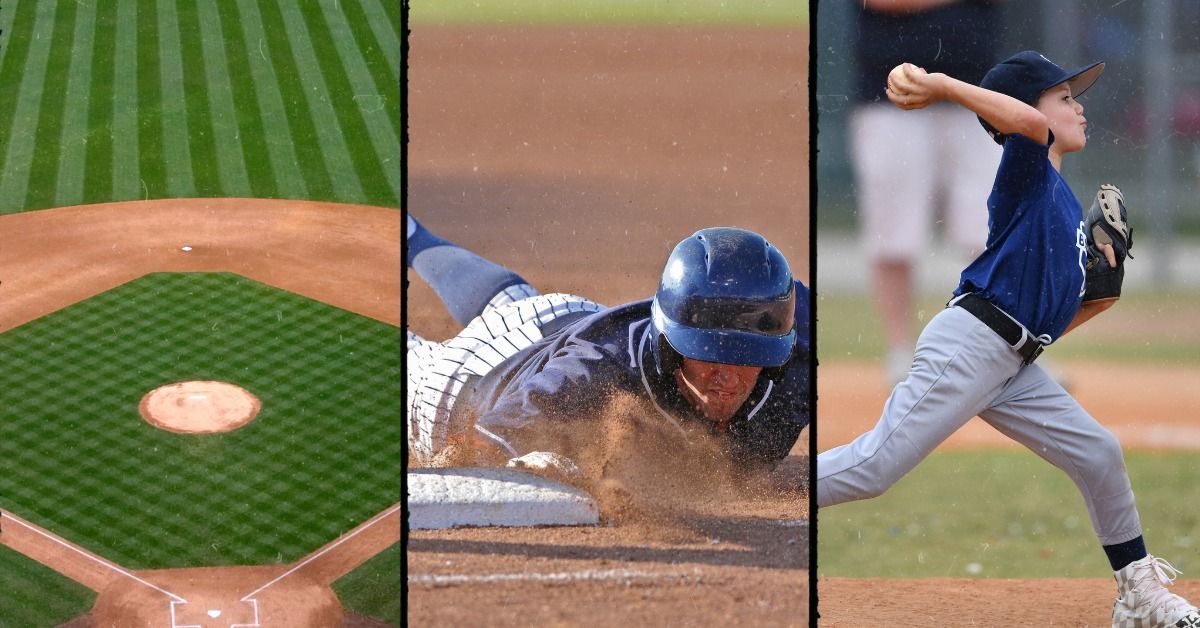
- Batter: The player at bat, attempting to hit the pitched ball.
- Pitching: The act of throwing the ball from the pitcher's mound to the batter.
- Diamond: The square-shaped area formed by the bases – first, second, third, and home plate.
- Runs: Points scored by batters as they advance around the bases and touch home plate.
- Home Run: Hitting the ball out of the playing area, scoring an automatic four runs.
- Inning: A division of the game during which each team has a chance to bat and field.
- Out: When a batter is declared out by an umpire due to various reasons, such as strikes, fouls, or being tagged by a fielder.
- Strike Zone: The area over the home plate where a batter must defend against pitched balls.
- Walk: When a batter is awarded first base after being pitched four balls outside the strike zone.
- Double Play: A defensive play in which two offensive players are put out in a single play.
Cricket Field Shape
The cricket field is typically oval-shaped, with a rectangular 22-yard pitch in the center. The pitch is a specially prepared strip in the center of the field where most of the action takes place. The outer edge of the field is marked by a boundary, which can vary in distance from the pitch. The area beyond the pitch and within the boundary is called the outfield. The area inside the boundary, around the pitch, is called the infield.
Baseball Field Shape
The baseball field is diamond-shaped, with four bases – first, second, third, and home plate – forming the corners of the diamond. Each base is a square bag placed on the ground and serves as a marker for runners to advance. The pitcher's mound is a raised area in the center of the infield from which the pitcher throws the ball.
The area beyond the infield, extending to the outfield fence, where fly balls are caught. The area within the diamond, including the pitcher's mound, bases, and home plate. The area outside the baselines is known as foul territory, where foul balls are hit.
Cricket Equipment
Bat: Batsmen use a flat wooden bat to hit the ball.
Ball: A hard leather ball is bowled by the bowler towards the batsman.
Stumps: Three vertical stumps and two bails from the wickets.
Pads: Protective pads worn by batsmen to shield their legs from the ball.
Helmet: Head protection worn by batsmen facing fast bowlers.
Gloves: Batsmen wear gloves for grip and protection.
Thigh Guard: A padded guard worn on the upper leg.
Chest Guard: Padded guard for protection of the chest area.
Box: Protective cup worn by male players.
Baseball Equipment
Bat: Batters use a rounded, cylindrical bat to hit the pitched ball.
Ball: A hard leather ball is pitched by the pitcher toward the batter
Glove: Fielders wear gloves to catch the ball.
Base: Four bases – first, second, third, and home plate – mark the diamond.
Catcher's Gear: Protective equipment worn by the catcher, including a chest protector, helmet, and leg guards.
Pitcher's Glove: A special glove used by the pitcher.
Cleats: Spiked shoes worn by players for better traction.
Batting Helmet: Protective helmet worn by batters to shield against pitched balls.
Umpire's Gear: Protective equipment worn by umpires, including a chest protector and mask.
Cricket Strategies
- Batting: Batsmen aim to score runs by hitting the ball and running between wickets. Strategies include shot selection, timing, and placement.
- Bowling: Bowlers strategize to dismiss batsmen by delivering varied types of deliveries, such as fastballs, spin, and yorkers.
- Field Placement: Captains position fielders strategically based on the batsman's tendencies and bowling plans.
- Batting Order: The batting order is arranged strategically, with power hitters, anchors, and finishers.
- Over Rates: Captains manage over rates to control the pace of the game and tire out opponents.
- Reviews: Teams strategically use Decision Review System (DRS) reviews to challenge umpiring decisions.
- Power Plays: In limited-overs cricket, power plays are strategically used to maximize runs during fielding restrictions.
Baseball Strategies
- Pitching: Pitchers strategize by selecting pitches and locations to deceive batters and induce weak contact or strikeouts.
- Batting: Batters strategize by adjusting stance, timing, and swing to hit pitches and advance runners.
- Defensive Shifts: Teams shift fielders based on batters' tendencies to hit in specific directions.
- Stealing Bases: Runners strategically attempt to steal bases, challenging the pitcher and catcher's coordination.
- Hit and Run: Batters and runners execute hit-and-run plays to advance runners and confuse fielders.
- Bunting: Batters bunt to sacrifice themselves and advance runners into scoring positions.
- Relief Pitchers: Managers strategically use relief pitchers to match up against specific batters.
- Double Plays: Infielders execute double plays to quickly record two outs.
Cricket Leading Teams
- Australia
- India
- England
- South Africa
- New Zealand
- Pakistan
Baseball Teams
- New York Yankees (MLB)
- Los Angeles Dodgers (MLB)
- Boston Red Sox (MLB)
- Chicago Cubs (MLB)
- St. Louis Cardinals (MLB)
Cricket vs Baseball
FAQs
Q: Which game is better cricket or baseball?
Answer: Cricket offers longer matches, strategic depth, and a wide range of playing formats, from Test matches to shorter formats like ODIs and T20s. It has a rich history and is deeply ingrained in the cultures of countries like India, Australia, England, Pakistan, and others.
Baseball, often referred to as America's pastime, has a faster pace and is popular for its exciting moments like home runs, double plays, and pitching duels. It has a strong following in the United States and other countries like Japan, South Korea, and Latin American nations.
Ultimately, the "better" game depends on factors such as personal interests, familiarity with the rules, cultural connections, and the type of experience one seeks in a sport. Both cricket and baseball have their charm, and fans of each sport passionately argue for their favorite. It's worth exploring both to appreciate their unique qualities and decide which resonates more with you.
Q: Is baseball harder to play than cricket?
Answer: The difficulty of each sport can vary based on factors such as individual preferences, cultural exposure, and personal experiences. Here are some points to consider:
Baseball Challenges:
- Pitching: Baseball pitchers need to master various types of pitches, accuracy, and deception to outwit batters.
- Hitting: Batters must react quickly to pitches and adjust their swing based on pitch speed, location, and type.
- Fielding: Baseball fielders require quick reflexes and precise throws to execute defensive plays, including double plays and tag-outs.
- Baserunning: Timing and strategy are crucial in baserunning to steal bases or advance on hits.
Cricket Challenges:
- Batting: Cricket batsmen face a wide variety of deliveries, including spin and pace, requiring solid technique and concentration.
- Bowling: Cricket bowlers need to master different types of deliveries, swing, and spin to deceive batsmen and take wickets.
- Fielding: Cricket fielders must be agile and have accurate throwing skills for run-outs and catches.
- Strategy: Cricket involves complex strategies, such as setting field placements and planning bowling changes.
Q: What is the difference between cricket and baseball?
Answer: Cricket and baseball are two distinct bat-and-ball sports, each with its own set of rules, equipment, and playing styles. Here are some key differences between the two sports:
Field and Equipment:
- Field Shape: Cricket fields are oval-shaped with a rectangular 22-yard pitch at the center. Baseball fields are diamond-shaped, with bases forming the corners.
- Pitching: In cricket, bowlers deliver the ball from one end of the pitch towards the batsman. In baseball, pitchers throw the ball from a raised pitcher's mound toward the batter.
- Bases: Cricket has two sets of wickets with three stumps each, while baseball has four bases – first, second, third, and home plate.
- Equipment: Cricket uses a flat bat, hardball, and wickets. Baseball uses a rounded bat, hardball, and bases.
- Fielding: In cricket, fielders stop the ball and attempt to dismiss batsmen. In baseball, fielders catch the ball and attempt to get batters out.
- Scoring: Cricket runs are scored by running between wickets and hitting boundaries. In baseball, runs are scored by advancing around the bases and touching home plate.
Gameplay and Rules:
- Format: Cricket has various formats, including Test matches, One Day Internationals (ODIs), and Twenty20 (T20) matches. Baseball has regular season games and playoffs leading to the World Series.
- Innings: In cricket, each team gets a chance to bat and bowl in an inning. Baseball has nine innings for each team.
- Outs: Cricket batsmen aim to avoid getting out, while baseball batters try to avoid accumulating three strikes for an out.
- Pitch Count: Baseball pitchers have a limited number of pitches before being replaced. Cricket bowlers can bowl a set number of overs.
- Runs: Cricket runs are scored by running between wickets and hitting boundaries. Baseball runs are scored by advancing around bases and touching home plate.
- Bowling Styles: Cricket has different styles of bowling, including fast, medium, spin, and leg spin. Baseball has different types of pitches, such as fastballs, curveballs, and sliders.
Cultural and Geographic Differences:
- Popularity: Cricket is widely popular in countries like India, Australia, England, and the West Indies. Baseball is a major sport in the United States, Japan, South Korea, and Latin American countries.
- Cultural Significance: Cricket and baseball have cultural significance in their respective regions, often reflecting historical and social influences.
Q: Can baseball be used for cricket?
Answer: Baseball and cricket are two distinct sports with different rules, equipment, and playing styles. While some similarities exist between the two, such as the use of a ball and bat, it's important to note that baseball equipment is not typically suitable for playing cricket and vice versa. Here's why:
Ball: Baseballs and cricket balls have different sizes, weights, and seam designs. A baseball may not be suitable for cricket due to variations in bounce, spin, and handling.
Bat: Baseball bats are typically rounder and shorter than cricket bats. Cricket bats are designed to accommodate different shots and playing techniques specific to cricket.
Pitch: The length and conditions of a cricket pitch are different from a baseball field. Cricket pitches are shorter, and the bowler delivers the ball from a different position compared to a baseball pitcher.
Fielding: The fielding positions and strategies in cricket are different from those in baseball. Fielders in cricket are positioned to counter various shot placements and tactics unique to cricket.
Rules: Cricket and baseball have distinct rules regarding scoring, pitching, fielding, and gameplay. Attempting to use baseball equipment for cricket or vice versa could lead to confusion or an improper playing experience.
Key Takeaways!
Must-Read Articles for Sports Enthusiasts
- Baseball Training Apparel That Elevates Your Game to the Next Level!
- Stylish Baseball Bag That Will Make You Feel Like a Pro!
- Mind-Blowing Facts You Didn't Know About Baseball - Thanks to Baseball Reference!
- 4 Baseball Cleats That Will Have You Stealing Bases Like a Pro!
Sponsored By




